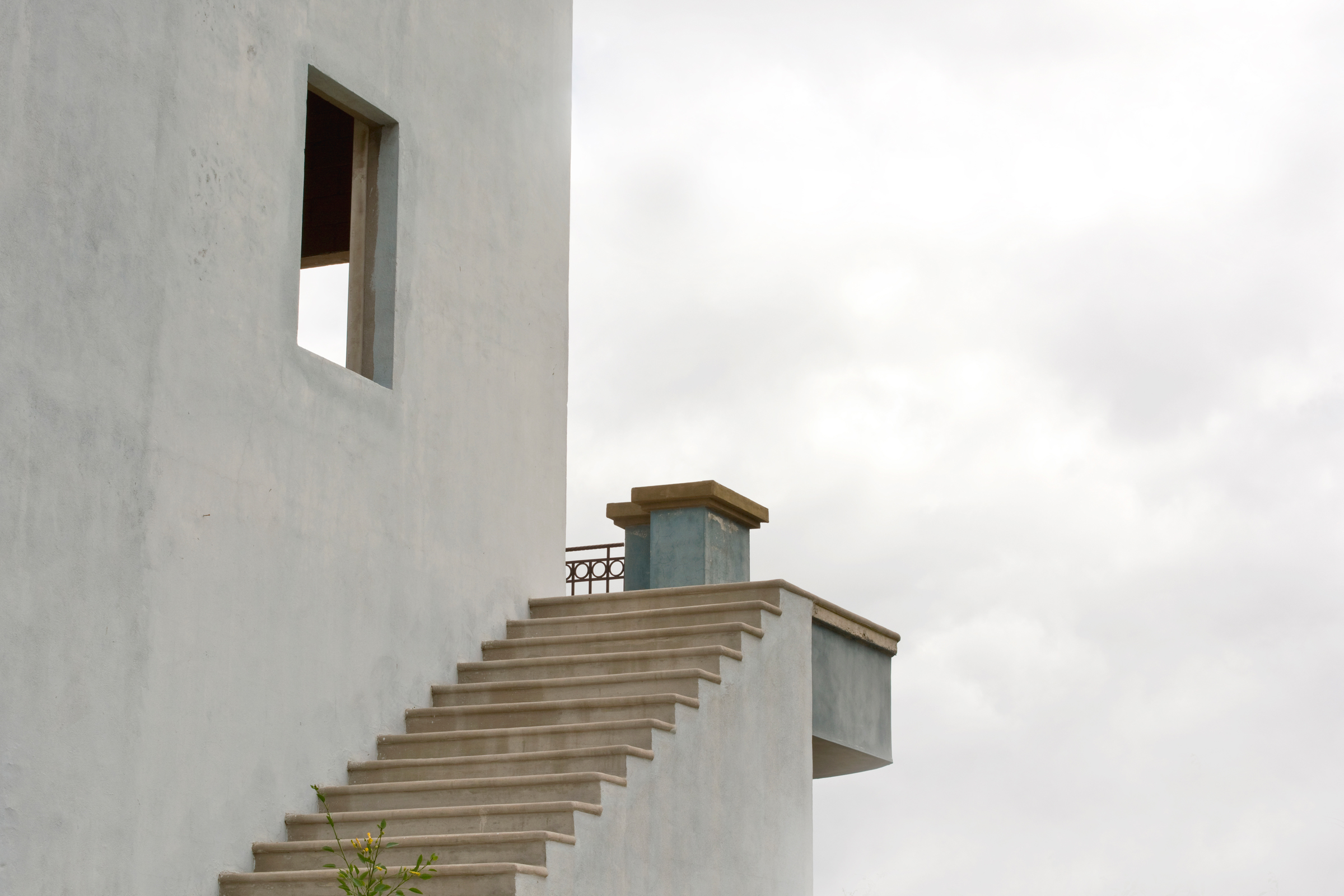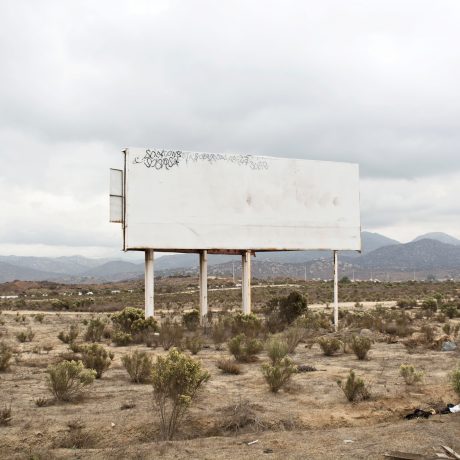
“We’re on a road to nowhere,” sang David Byrne of Talking Heads in 1985. He might as well have been talking about the troubled transformation of the south-west of the United States, where towns on both sides of the Mexican border can undergo rapid change only to find themselves back where they started. Building sites stall due to lack of funds and mismanagement, part of a cycle of regeneration that sees the political tensions of the border region drawn out and exacerbated.
Mexico’s second largest city, Tijuana, has seen major construction projects come and go over the years. Its location on the border to San Diego has led to it becoming a haven for hopeful migrants looking to make the passage to America, many of whom find themselves settling in Tijuana permanently.
“A staircase ascends a blank wall, with a single window looking out to the unseen horizon beyond the camera’s frame”
The many contradictions and pressure points of Tijuana (a manufacturing hub of Mexican goods intended for export to the United States) are vividly illustrated by Mónica Arreola in her photo series Valle San Pedro, which captures a group of Tijuana housing projects. Planned as a new city for one million residents on the outskirts of Tijuana, just 1% of the homes were built after the 2008 economic recession hit. The ghostly remains of half-built facades, former advertising billboards and unfinished streets are photographed against the dusty backdrop of the open desert landscape, where the hard concrete lines of the deteriorating building works meet the scrubby, dehydrated greenery of the natural terrain.
In this image from the series, a staircase ascends the edge of a blank wall, with a single window looking out to the unseen horizon beyond the camera’s frame. No handrail has been assembled, leaving the staircase as a precarious route to… well, nowhere. It is an apt metaphor for the precariousness of the region, where frustrating possible paths forward are all too often shown to be circuitous, leading all the way back to the beginning.
“These photographs are documents of a specific period, something that has passed”
A single growth of yellow flowers emerges at the base of the image, a small beacon to the possibilities of what could have been, as well as a reminder of the unbending presence of nature even as the will of humans all too often crumbles. This burst of yellow amidst the ruins can be seen as a visual reflection upon the boom-and-bust economy of this border city, where economic and political aspiration meets the harsh realities of their physical surroundings.
“It’s a very melancholic space,” Arreola stated. A Tijuana resident and founder of local gallery 206 Arte Contemporáneo (co-founded with her architect twin sister), Arreola turns her lens upon the built environment as a way of understanding the tensions of the region. Buildings, whether finished or unfinished, act as fast-changing snapshots of a place and time. “These photographs are documents of a specific period, something that has passed,” she says, “like the contents of a family photo album or a personal archive.”
Louise Benson is Elephant’s deputy editor
Mónica Arreola: Valle San Pedro appears in the 2022 Whitney Biennial at the Whitney Museum of American Art in New York until 5 September 2022






